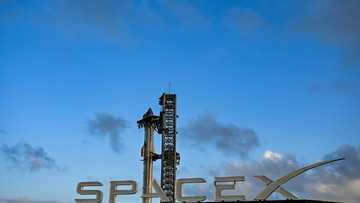Mars Mission: Elon Musk's Starship Rocket Explodes During Test-launch, Giant Fireball Seen in Sky
- Starship's rocket, developed by Elon Musk's SpaceX company, exploded in South Texas during preparation for a test launch
- This is not the first time the giant Starship has exploded, as it has happened in the past during test launches
- Elon Musk aims to use the Starship to take humans to Mars, which is 56 million kilometres to 400 million kilometres from Earth
Elon Musk's ambition to take humans to Mars is still facing significant challenges which the billionaire would have to overcome.
The latest is the explosion of his Starship, the giant vehicle which he wants to use to take people to the red planet.

Source: Getty Images
Videos of the explosion have flooded the internet as some people wondered if he would be able to achieve his objective.
One of the videos posted on YouTube by Today shows the giant fireball released into the sky by the explosion.
According to reports, the Starship rocket exploded when it was being prepared for its latest test launch.
Today reports:
"A SpaceX Starship rocket exploded during ground preparations for an upcoming launch, creating a massive fireball and rattling nearby residents in South Texas. The company, led by Elon Musk, said the rocket “experience a major anomaly” while preparing for its tenth flight test, adding that all personnel are safe and there are no hazards to residents in surrounding communities."

Source: Getty Images
Watch the video below:
Starship has experienced issues before
This is not the first time the Starship has experienced problems, as something similar happened in May.
In March, Starship exploded mid-air after taking off during the giant ship's 8th flight test on Thursday, March 6.
The Starship, which had 33 Raptor engines, did not complete the test flight as it exploded mid-air, after nine minutes.
Back then, the company stated that the Starship was lifted by 33 Raptor engines, adding that:

Read also
Sad video shows half-eaten and untouched plates of food in hostel where Air India plane crashed into
"Starship’s eighth flight test lifted off from Starbase in Texas at 5:30 p.m. CT on Thursday, March 6. The Super Heavy booster successfully lit its 33 Raptor engines and propelled Starship through a nominal first-stage ascent. Approximately two and a half minutes into flight, the Super Heavy booster shutdown all but three of its Raptor engines as planned for hot-staging separation. Starship then successfully lit its six Raptor engines and separated from the Super Heavy booster to continue its ascent to space."
What caused Starship's explosion in March?
The company attributed Starship's explosion to what it called "an energetic event."
It stated:
"Starship continued its ascent to its planned trajectory. Prior to the end of the ascent burn, an energetic event in the aft portion of Starship resulted in the loss of several Raptor engines. This in turn led to a loss of attitude control and ultimately a loss of communications with Starship. Final contact with Starship came approximately 9 minutes and 30 seconds after liftoff."
Elon Musk aims to make life interplanetary as he wants humans to be able to colonise Mars. The challenge, though, is that Mar is located 56 million kilometres to 400 million kilometres from Earth.
Scientists share information about Mars
Earlier, Legit.ng reported that Chinese and American scientists who are studying to know if Mars once had water bodies have made a new discovery
People like Elon Musk have always dreamed of sending humans to Mars and making it habitable like the Earth
The Chinese robot known as Zhurong rover landed on Mars in 2021, and it has sent back information after penetrating the ground
Source: Legit.ng




